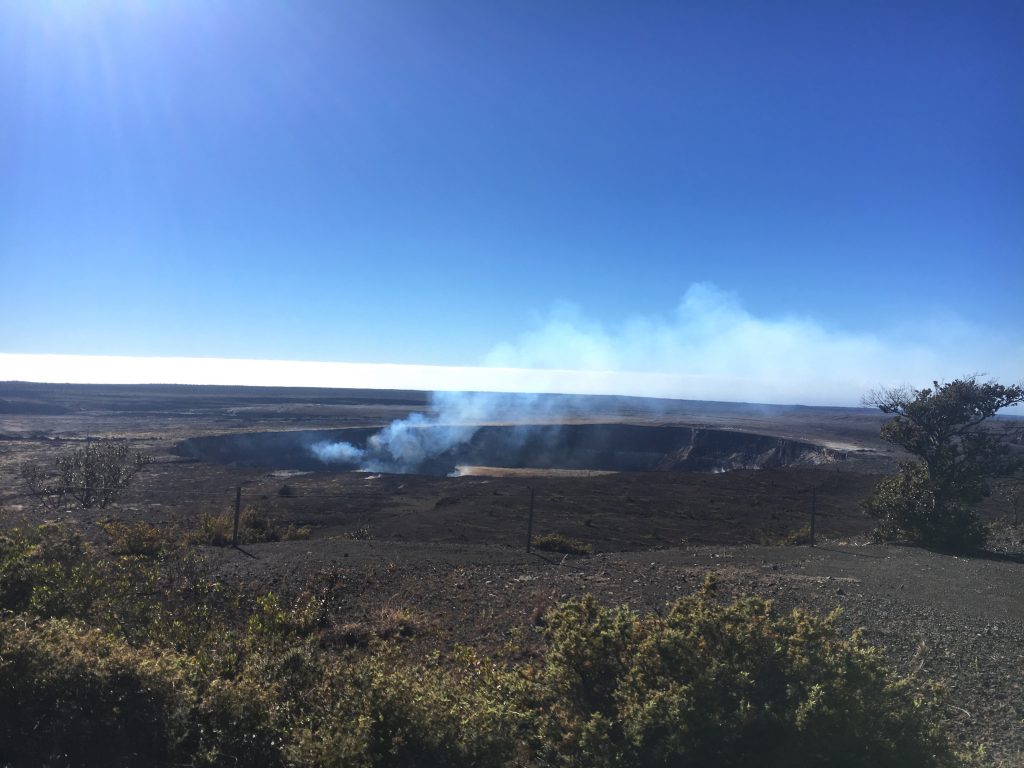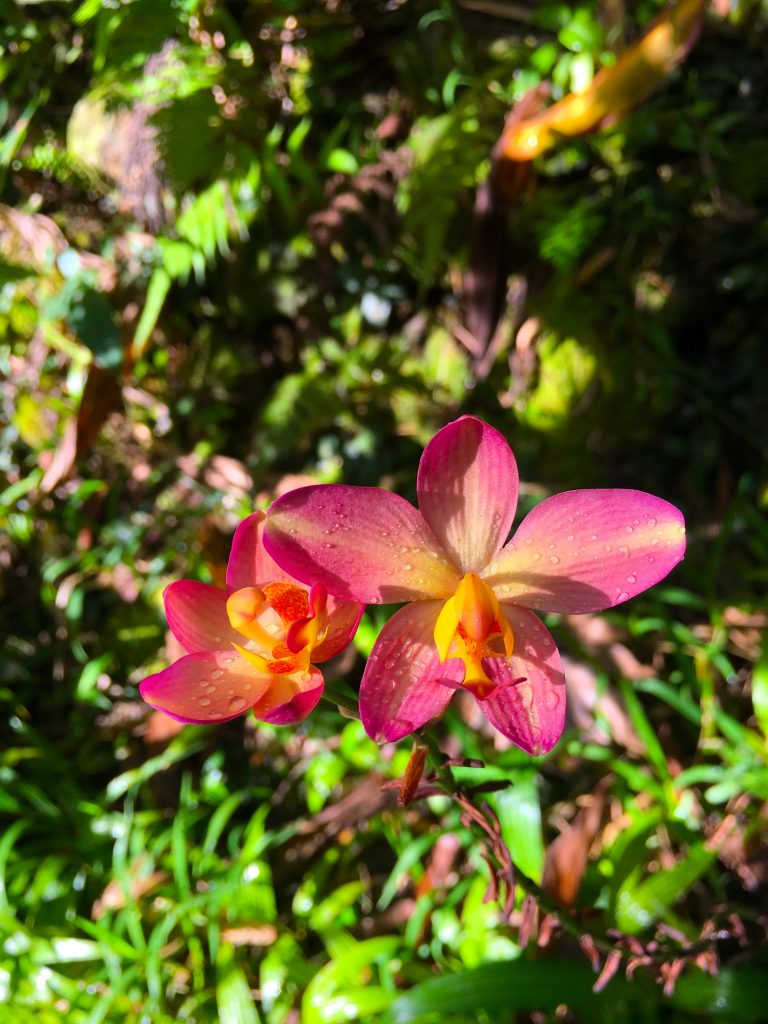
Submitted by Sarah Zuk on the 2018 winter session program in Hawaii sponsored by the Department of Biological Sciences…
My third week in Hawaii was spent exploring the Big Island, which is home to three of the currently active volcanoes on the islands. Volcanoes in the Hawaiian region are considered quite different from most other volcanoes in the world. Many volcanoes are referred to as composite volcanoes because they erupt slowly to make cone-shaped mountains. Hawaiian islands are created by quicker eruptions which form shield volcanoes. Our class spent a day exploring the volcanoes and I was excited to see the steam from hot lava coming to the Earth’s surface at Halema‘uma‘u Crater. The aftermath of a volcanic eruption can be seen through the valleys of the Big Island, where the flourishing forests end and only cooled black lava rock can be seen for miles. I was amazed by the huge, gorgeous cliffs that were created from the eruptions as well as the lava tubes we walked through in the middle of the forest. Even though volcanoes could be incredibly detrimental to society and the environment, they created the Hawaiian islands and are the reason there is so much flourishing life here today.






